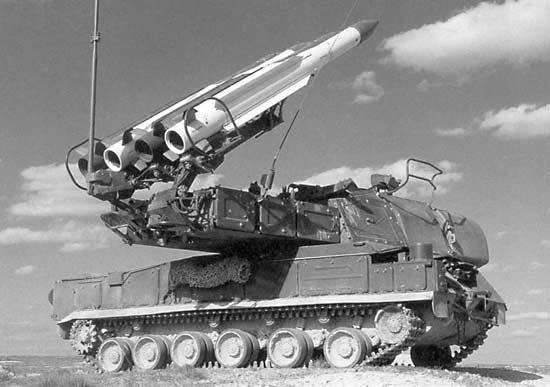The quest to develop guided missiles, particularly surface-to-air missiles (SAMs), gained significant momentum during and after World War II. While Germany made notable progress in this field before the war’s end, their SAM technology wasn’t sufficiently refined for combat deployment. The 1950s and 60s witnessed an explosion of advancements in SAM systems, primarily driven by the Soviet Union, the United States, Great Britain, and France. As other industrialized nations joined the race, many armies and navies began fielding their own indigenously designed surface-to-air missiles, especially in the smaller categories.
The Soviet Union’s Pioneering Role in SAM Development
The Soviet Union emerged as a leader in guided-missile air-defense systems, dedicating substantial resources to their development. Their efforts began with the SA-1 Guild, a system conceived in the immediate postwar era. The Soviets continuously introduced increasingly sophisticated SAMs, which can be categorized into two main types:
- Fixed Installation Defense Systems: These systems, including the Guild, SA-3 Goa, SA-5 Gammon, and SA-10 Grumble, were strategically deployed to protect critical infrastructure and stationary targets.
- Mobile Tactical Systems: Designed to accompany and protect ground forces on the move, these mobile systems often had naval counterparts, extending their defensive capabilities to maritime environments.
The SA-2 Guideline: A Landmark in Guided Missile Technology
The SA-2 Guideline, introduced in 1958, holds a significant place in the history of guided missiles. It was the first surface-to-air guided-missile system to be used in combat, marking a turning point in air defense strategies. This two-stage missile, featuring a solid booster and a liquid-propellant sustainer (using kerosene and nitric acid), could engage targets at ranges of up to 28 miles and altitudes as high as 60,000 feet.
Equipped with a network of van-mounted radars for target acquisition, tracking, and missile guidance, the Guideline demonstrated its effectiveness during the Vietnam War. Although U.S. pilots learned to outmaneuver these large missiles (nicknamed “flying telephone poles”) with adequate warning, and electronic countermeasures (ECM) reduced the effectiveness of tracking radars, the SA-2 still posed a significant threat. Even when they didn’t directly inflict heavy losses, these SAMs forced U.S. aircraft to lower altitudes, where they became vulnerable to anti-aircraft artillery and small arms fire. Subsequent versions of the SA-2 incorporated optical tracking to mitigate the impact of ECM, a feature that became standard on many SAM systems. Even after being retired from frontline service in the Soviet Union, the SA-2 remained in use in various Third World countries.
Further Advancements: SA-3 Goa, SA-4 Ganef, and Beyond
The Soviet Union continued to innovate, developing missiles like the SA-3 Goa, a derivative of the Guideline designed for low-altitude targets, first deployed in 1963. The SA-N-1 was a similar naval missile. The SA-4 Ganef, a long-range mobile system introduced in the mid-1960s, utilized drop-off solid-fuel boosters and a ramjet sustainer motor. Equipped with radar command guidance, active radar homing, and mobile radars, it could engage targets beyond the horizon.
 SA-11 Gadfly medium-range SAM system soviet union 1980
SA-11 Gadfly medium-range SAM system soviet union 1980
The SA-5 Gammon, a high- and medium-altitude strategic missile system with a range of 185 miles, saw export to Syria and Libya. The SA-6 Gainful, a mobile tactical system, had a range of two to 35 miles and a ceiling of 50,000 feet. Three missiles were carried on a tracked transporter-erector-launcher (TEL), with radar and fire-control systems mounted on a separate vehicle. The SA-6 was highly effective during the 1973 Arab-Israeli War, proving difficult to outmaneuver. Later SAMs such as the SA-8 Gecko, SA-7 Grail, and SA-9 Gaskin showcased further advancements in mobility, targeting, and guidance.
American SAM Development: Nike Ajax, Hawk, and Patriot
The United States also made significant strides in SAM technology. The first generation of American SAMs included the Army Nike Ajax, operational in 1953, and the Navy Talos. Both used radar tracking and radio command guidance. The later Nike Hercules had a range of 85 miles. After 1956, the Talos was supplemented by the Terrier and the Tartar. These were replaced in the late 1960s by the Standard missile.
The Hawk missile system became the backbone of U.S. surface-based air defenses in Europe and South Korea from the mid-1960s. The Patriot missile system began entering service in 1985 as a partial replacement for the Hawk, employing a phased-array radar for target acquisition and tracking. The Redeye and Stinger shoulder-fired missiles provided close-in protection against air attack.
Western European SAM Systems
Western European nations also developed their own SAM systems. The German-designed Roland and the French Crotale were widely exported. The British Rapier, a short-range, semimobile system, was used with some success in the Falklands conflict in 1982.
The Next Generation of SAMs
The 1980s saw the introduction of a new generation of Soviet SAM systems, including the SA-10 Grumble, SA-11 Gadfly, SA-12 Gladiator, SA-13 Gopher, and SA-14. These systems featured advancements in range, speed, guidance, and mobility, enhancing their effectiveness against a wider range of threats.
Conclusion: A Legacy of Innovation
The development of guided missiles, particularly surface-to-air missiles, represents a significant chapter in military technology. The SA-2 Guideline, as the first SAM system used in combat, holds a special place in this history. From the early innovations of the Soviet Union and the United States to the advancements made by other nations, the pursuit of effective air defense systems has driven continuous innovation and shaped the landscape of modern warfare.